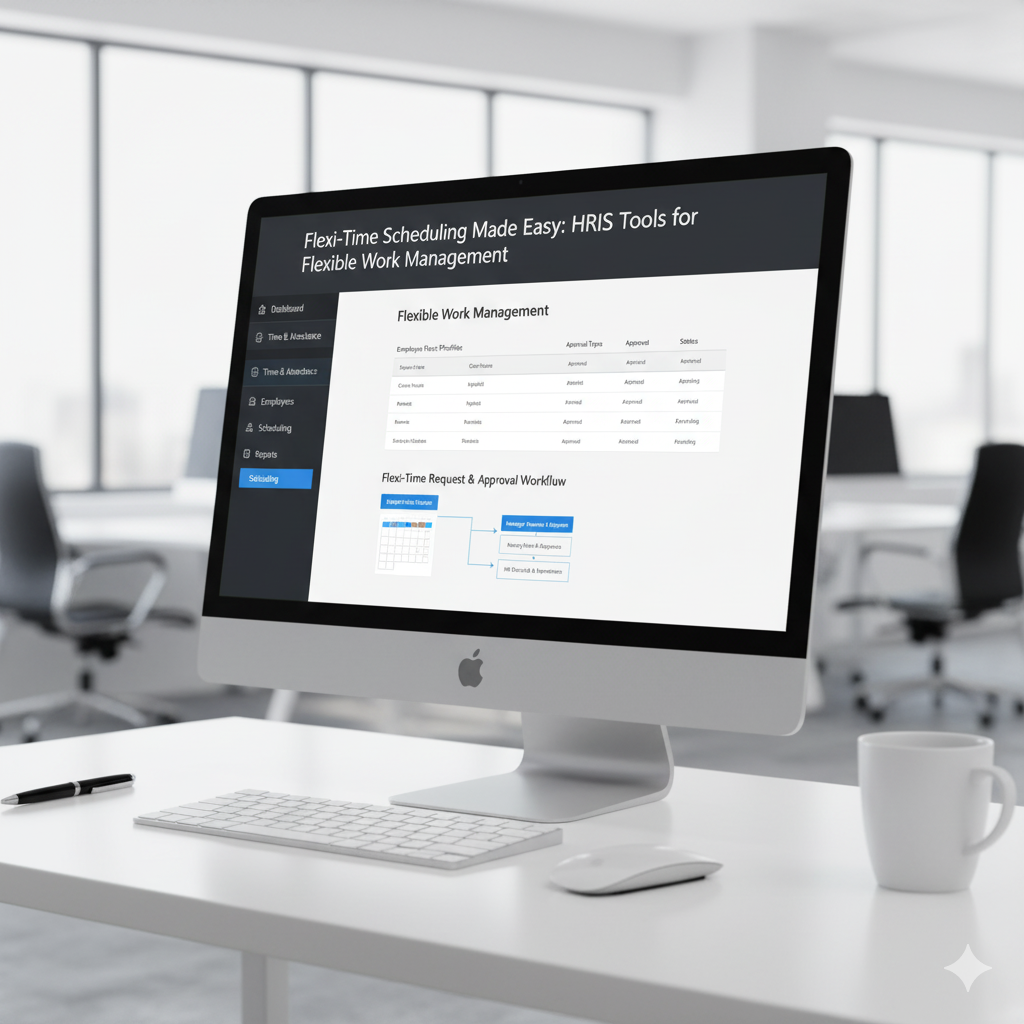Address
Kaypian, San Jose Del Monte City, Bulacan Philippines
Work Hours
Monday to Friday: 8AM - 6PM
Weekend: 10AM - 5PM
Address
Kaypian, San Jose Del Monte City, Bulacan Philippines
Work Hours
Monday to Friday: 8AM - 6PM
Weekend: 10AM - 5PM


Integrated HR. Accurate Payroll.


Integrated HR. Accurate Payroll.

In today’s evolving workplace, flexibility isn’t just a perk — it’s an expectation. As organizations adapt to hybrid and remote work models, HR departments are turning to HRIS tools to manage flexi-time schedules more efficiently.
With the right HR technology, HR teams can create, track, and manage flexible schedules that keep both business operations and employee satisfaction running smoothly.
This article explores how to set up and manage flexi-time scheduling using HRIS tools, helping HR professionals build smarter, more adaptive workforce systems.
Flexi-time (or flexible scheduling) allows employees to choose their working hours within agreed-upon limits — for example, starting between 7–10 AM and finishing between 3–6 PM.
It’s a cornerstone of modern workforce management because it:
However, managing flexi-time manually can be complex. That’s where HRIS (Human Resource Information Systems) come in — automating scheduling, tracking, and compliance effortlessly.
Modern HRIS systems like Workday, BambooHR, SAP SuccessFactors, or Zoho People provide built-in scheduling features that make flexible work management easier and more accurate.
Key Benefits of Using HRIS Tools:
These tools reduce manual effort and eliminate common scheduling errors that can cause payroll discrepancies or employee frustration.
Step 1: Define Flexi-Time Policies
Before configuration, establish clear guidelines:
Documenting these ensures consistent application across the organization.
Step 2: Configure Work Schedules in Your HRIS
In your HRIS, navigate to Time Management → Work Schedules or equivalent.
Define:
Step 3: Assign Employees and Approvers
Once schedules are created:
Step 4: Enable Employee Self-Service
Flexi-time thrives on trust and autonomy.
Allow employees to:
This reduces administrative workload while promoting transparency.
Step 5: Integrate with Payroll and Attendance
Integration ensures that recorded work hours sync automatically with payroll systems.
This avoids:
Your HRIS will handle these calculations automatically once the system is configured properly.
| Challenge | How HRIS Tools Help |
| Manual tracking of variable hours | Automated attendance logging and reports |
| Policy inconsistency across departments | Centralized configuration with rule-based governance |
| Payroll discrepancies | Real-time data sync between time and payroll modules |
| Lack of visibility | Dashboards showing attendance, overtime, and schedule trends |
| Employee confusion | Self-service portals for viewing and adjusting schedules |
🕒 Set Clear Core Hours: Balance flexibility with collaboration time.
📅 Plan Ahead: Publish schedules weekly or monthly for predictability.
⚙️ Automate Approvals: Use workflow automation for quick approvals.
💬 Communicate Transparently: Ensure employees understand policy boundaries.
📈 Monitor Performance Metrics: Evaluate how flexi-time impacts productivity.
These practices help HR teams maintain consistency while supporting flexibility.
The demand for flexible work is here to stay. According to SHRM, over 70% of employees prefer employers who offer flexible scheduling options.
By leveraging HRIS tools, HR teams can transition from manual tracking to data-driven, automated, and employee-centric scheduling.
This not only improves HR efficiency but also strengthens employee engagement and retention in the long run.
Managing flexible schedules doesn’t have to be complicated.
With the right HRIS tools, HR professionals can easily configure flexi-time rules, monitor attendance, and maintain compliance — all while supporting employee autonomy.
Automating your flexi-time scheduling transforms flexibility from a management challenge into a strategic advantage for your organization.